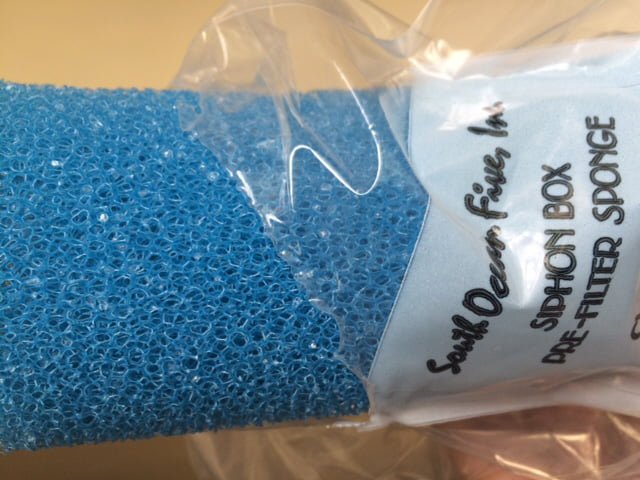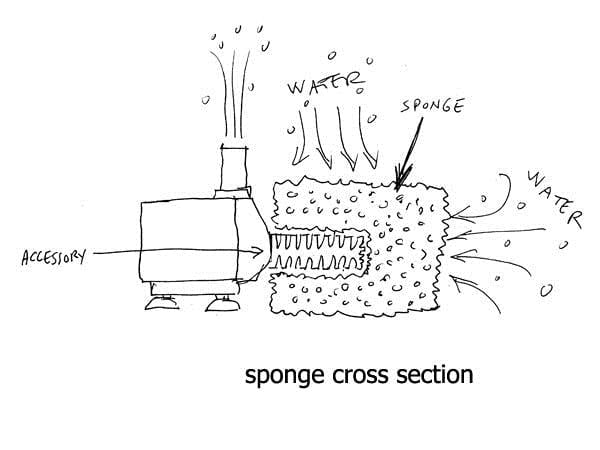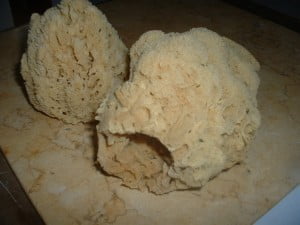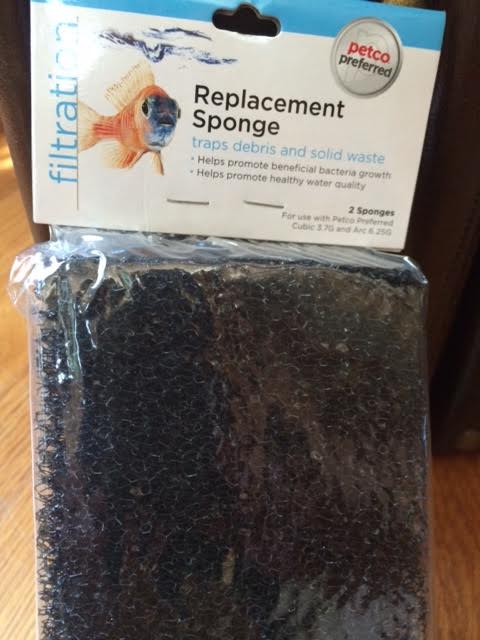Pond pumps belong in every goldfish and Koi house
STEP 7
Pond pumps belong in every goldfish and Koi house. There are many fancy and expensive filtering systems available in all price ranges, some costing hundreds of dollars. Pet shop filters are designed for tropical fish; not goldfish. Standard filtering systems are located at the top of the aquarium where there is little or no waste. Even though there’s an intake extension that comes close to the floor, the intake is slow, and it sits to the side of the tank
Filters and pumps do much more than push water and filter it, they house beneficial bacteria
Goldfish create a lot of waste which accumulates at the bottom of the tank where they rest and feed. Friendly bugs feed on the ammonia created by their waste. The home they live in should be located in the same proximity, encouraging them to build strong colonies, making for a strong cycle
Boost pH by performing water changes
Water filter verses pond pumps
New fish keepers use carbon in their filters, assuming it will keep the cycle from forming; referred to a cycle free tank, but products and others like it are not predictable. Your fish are at risk in a cycle free environment
Encouraging consistent pH levels, oxygenated water is the key to a healthy ecosystem
How pond pumps work
Pushing water from the bottom to the surface; a simple, submersible pond pump creates a powerful jet stream that clears Co2 from water. No goldfish set up is complete without one, because no other filter or pump provides the necessary action to clear a body of water
Goldfish Care
Pond pumps typically come equipped with water volume controls. These settings may be turned up or down to obtain the desired action. When cleaning tank or sponges, a higher setting should be powerful enough to clear a cloud in the water quickly
Switching from a standard filtering system to a pond pump is easy. Leave your old filter up and running for two to three months after installing a pond pump. If your old filter has a volume control, turning it down will be discourage beneficial bacteria from forming in it, and encourage them to form in the new pond pump. Friendly bugs prefer pond pumps because they move water faster, making for increased oxygen levels. They sit close to the waste, which produces their food source. Remove the old system after the waiting period, and you’re good to go
Cleaning goldfish aquarium
Friendly bugs require heavily oxygenated water and complete darkness for reproducing
Water filters verses pond pumps
Wrap an aquarium safe sponge around the intake of your pond pump. The sponges filters free floating debris from water, and keeps the pump running smoothly. Rinse sponges in old tank water. Even though the sponge may appear clean at the top, grunge accumulates mostly at the bottom. Vacuum beneath the pump. Perform this task weekly; depending on your stocking levels
How maintain pond pumps
Warning: Make sure sponges completely cover intake valves. Exposed intakes may result in injury to fish. When removing sponges to rinse; do not leave intake exposed for longer than necessary. Sponge should be placed on the outside (not inside) of the intake or basket
Make certain your new pump has a volume control. Parts may be separate and need assembly
Check to make sure the sponge is clean if the mechanics of your pump slows. Try unplugging the unit for an instant. The sudden action will push a clog through if this is the trouble. If this doesn’t get the job done, jostle the pond pump in a bucket of old tank or pond water. Still not getting any action? Don’t remove the pump. Keep a close watch on your water parameters; prepare for a spike in the cycle. When a pond pump stops and won’t start again, obtain a new pump asap. Place it next to the dead pump. Within a few months the new unit will become established, and hopefully without causing a spike
Use only standard aquarium safe sponges, or even better, sea sponges. What could be more natural?
When you remove a sponge to rinse, crank up the volume of the pump to give it a good blowing out
Pre filter or filter sponges
Using pre filter sponges could restrict water flow, causing the pump to overheat. Beneficial bacteria will find a good spot to build their colony inside of the pump. Wrap an aquarium safe filter sponges wrapped over the intake is all a goldfish tank or pond needs. The pump will provide housing for beneficial bacteria; the sponge will act as a filter to keep water clear of free floating debris
Water filters verses pond pumps
Avoid the use of filter pads, filter media or pre filter sponges; white or blue

Don’t make the mistake of using a pre-filter sponge. Too dense, they could cause your pump to overheat (see above)
Provided by Kuja, the drawing below shows a basket over the intake valve wrapped with a cylinder shaped sponge. Not all pumps come with these extensions, however, maintenance is much easier because the sponge is easily removed and replaced. Create a cylinder shaped sponge by sewing square ones together, or you can spend a little more and buy one sized to fit. The best pumps have baskets over the intakes for greater and more consistent flow

Some of the smaller pumps have no basket. A rubber band may be used to fasten a sponge over these intakes. Use a real organic sea sponge or filter (aquarium safe) sponge purchased from the pet shop. The sea sponge in the photo below is a real sea sponge. The sponge has been hollowed out so that it can easily slip on and off the basket covering the intake

If you’re working on creating an organic ecosystem, a real sea sponge, shown above, is the choice for you. Authentic sea sponges have just the right density for filtering pumps. Don’t be fooled by man made sea sponges. You may also see sponges labeled as natural sponges, that actually come from a land plant. It’s hard to tell the difference. Below is a great company that sells real sea sponges for a great price
The black filter sponge in the photo below is a good choice for pond pumps

Sizing pond pumps
Water pumps are rated by gallons or liters per hour. Start with a minimum of 100 GPH; add 100 for every 10 gallons of water. Taller tanks or ponds require a larger pump size to create adequate action. Shallow water may benefit from having two pumps at half the rating. Larger goldfish houses benefit by having more than one pond pump to distribute the action
Water filters verses pond pumps
Warning: Sponge plants are being passed off as sea sponges; called natural sponges. Although they are natural, they’re not from the sea. Make sure the sponge you buy is from the sea, not the earth. Sponges from plants degrade in a short time, and pollute the tank or pond water
Do not use carbon or charcoal or other filter media, such as pre-filter sponges, as this could overheat the unit
Most pet shops do not sell pond or water pumps. You can find them at your local lawn and garden center in the pond section, or shop online
Placing an (aquarium safe) sponge under the motor box will quiet a loud pump. Rinse sponge with routine maintenance

Pond pumps cost a fraction of the price of the more fashionable aquarium filtering systems. and do twice the work
Crank up the action and decrease clouded water Cloudy Water
Step 8 Performing Water Changes
10 Steps to Goldfish Koi Keeping
All rights reserved
Author: Brenda Rand